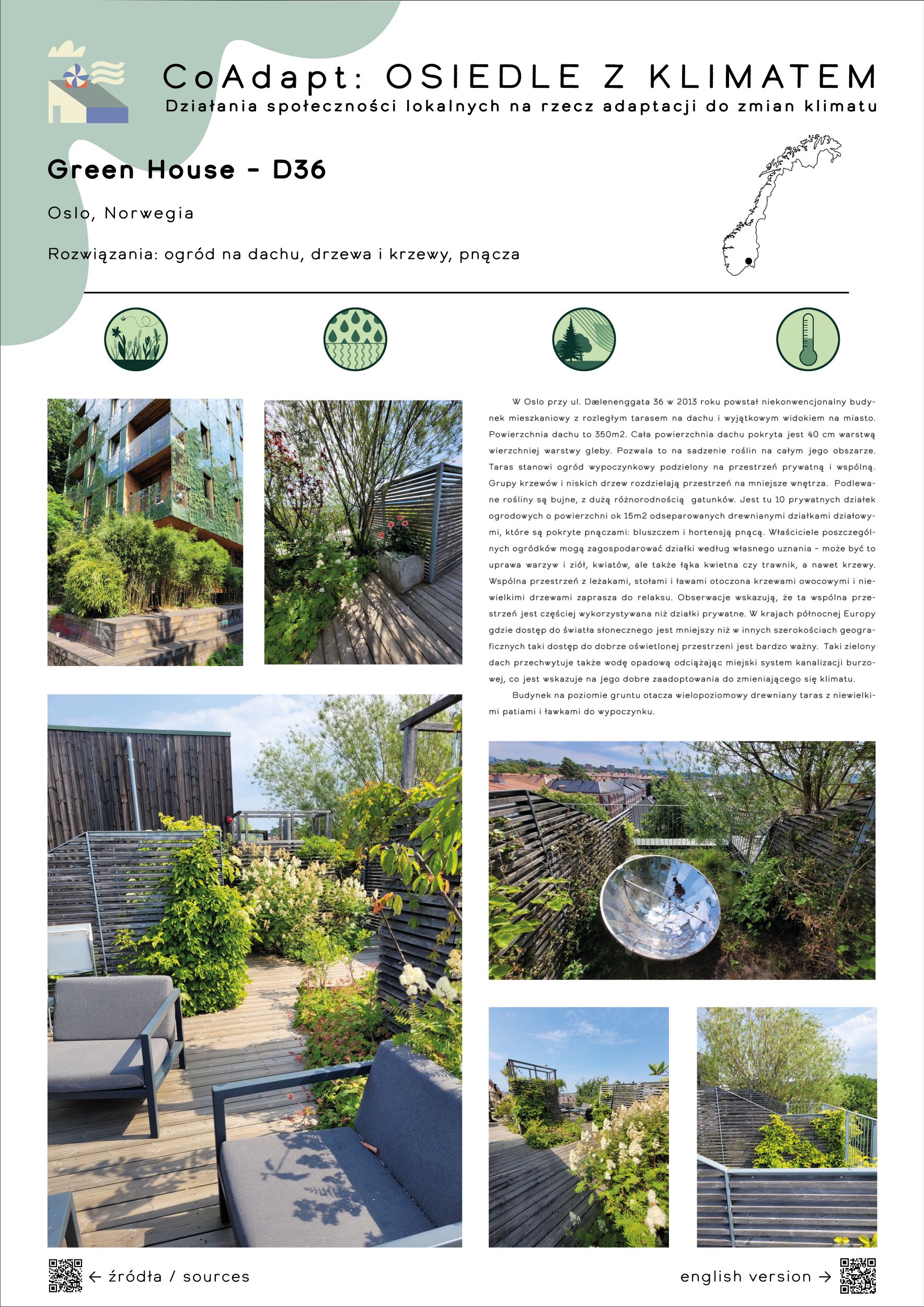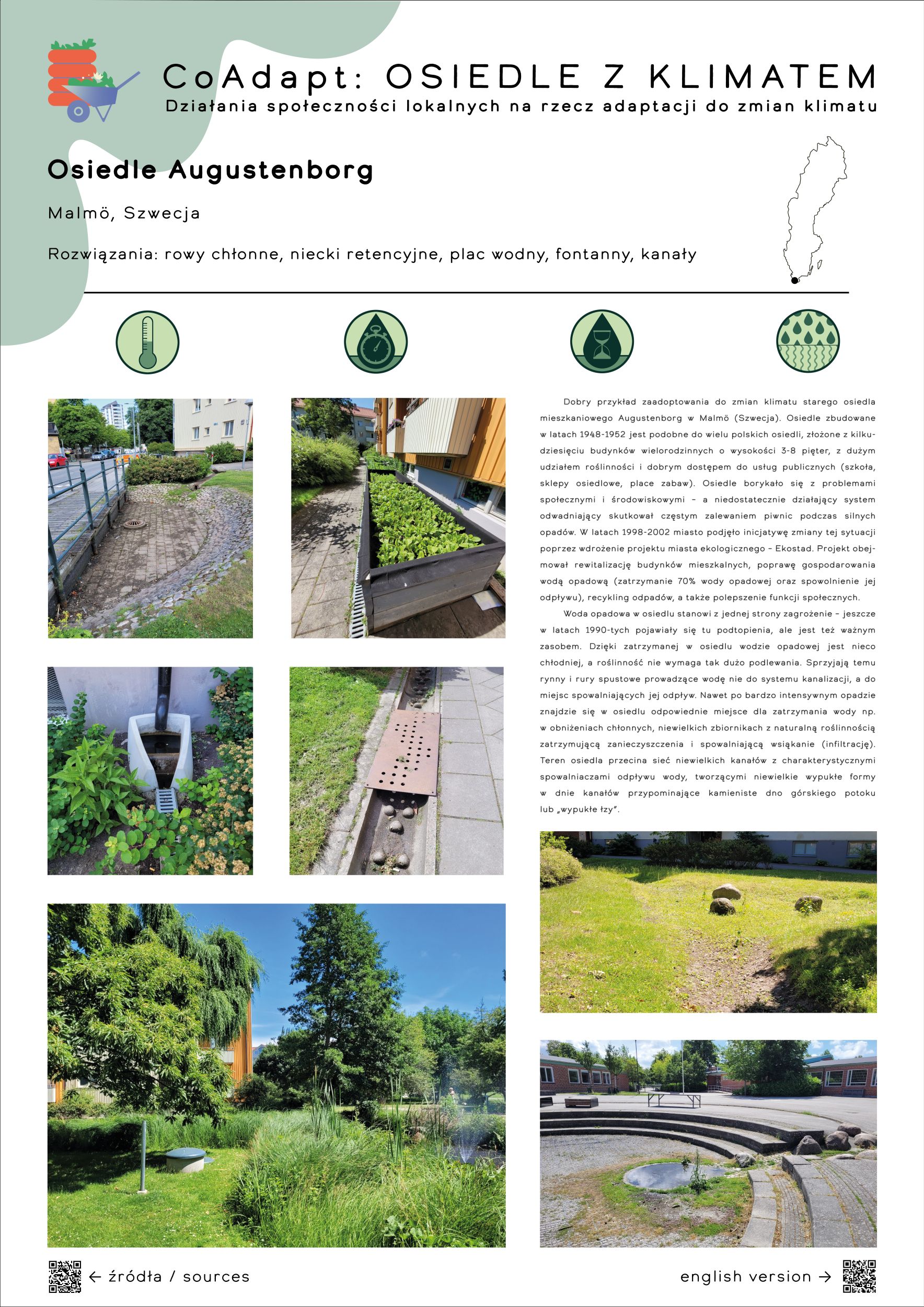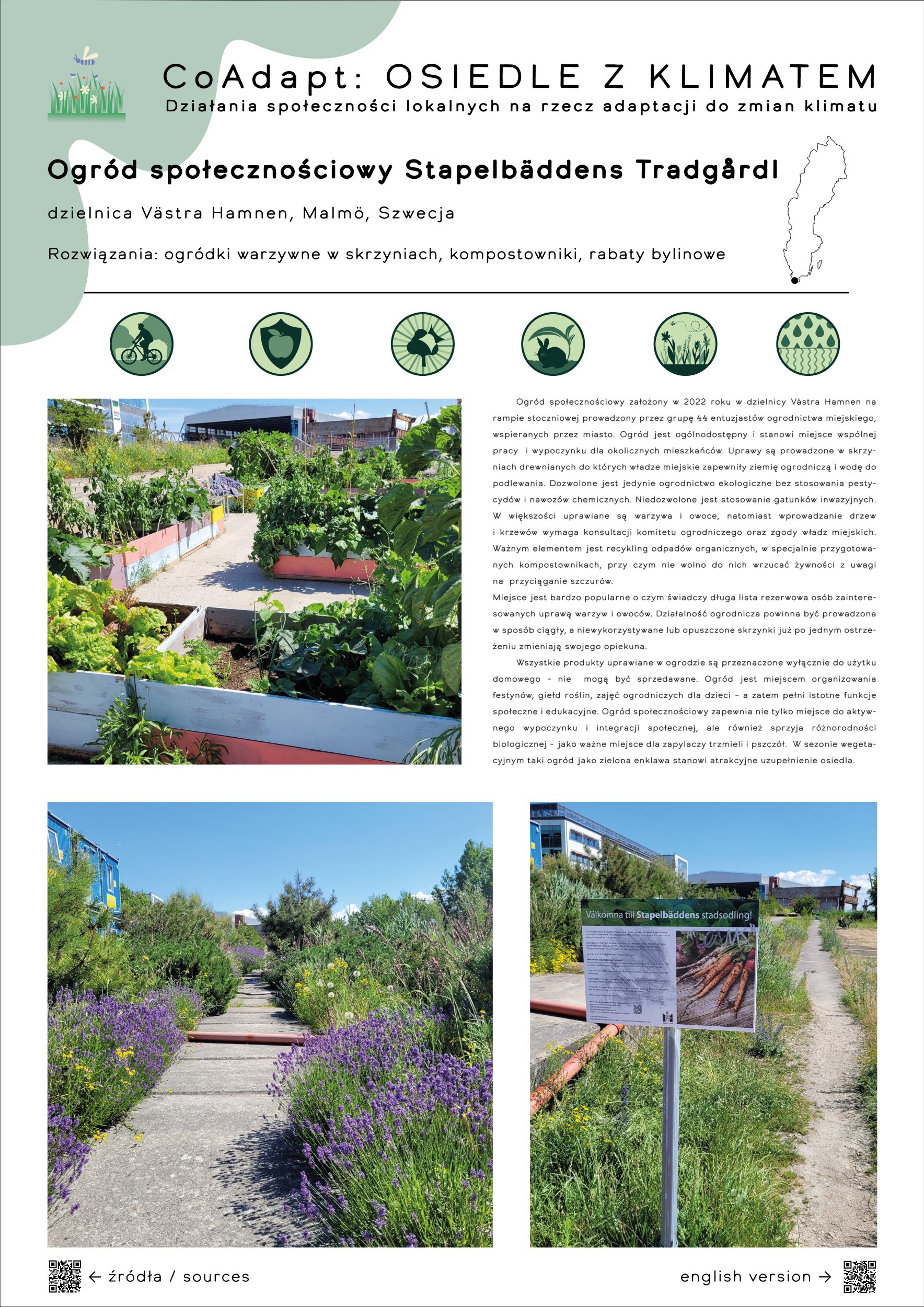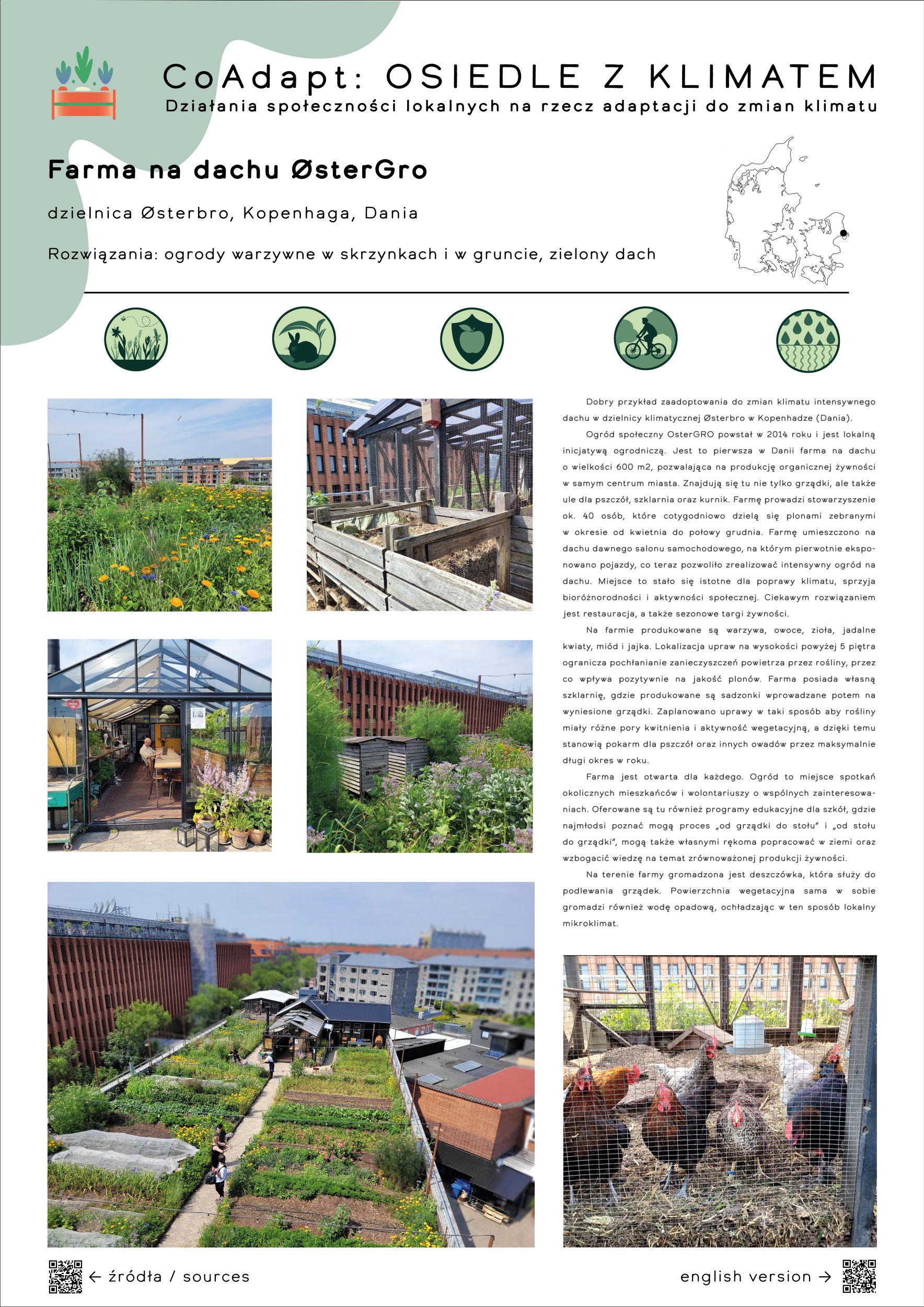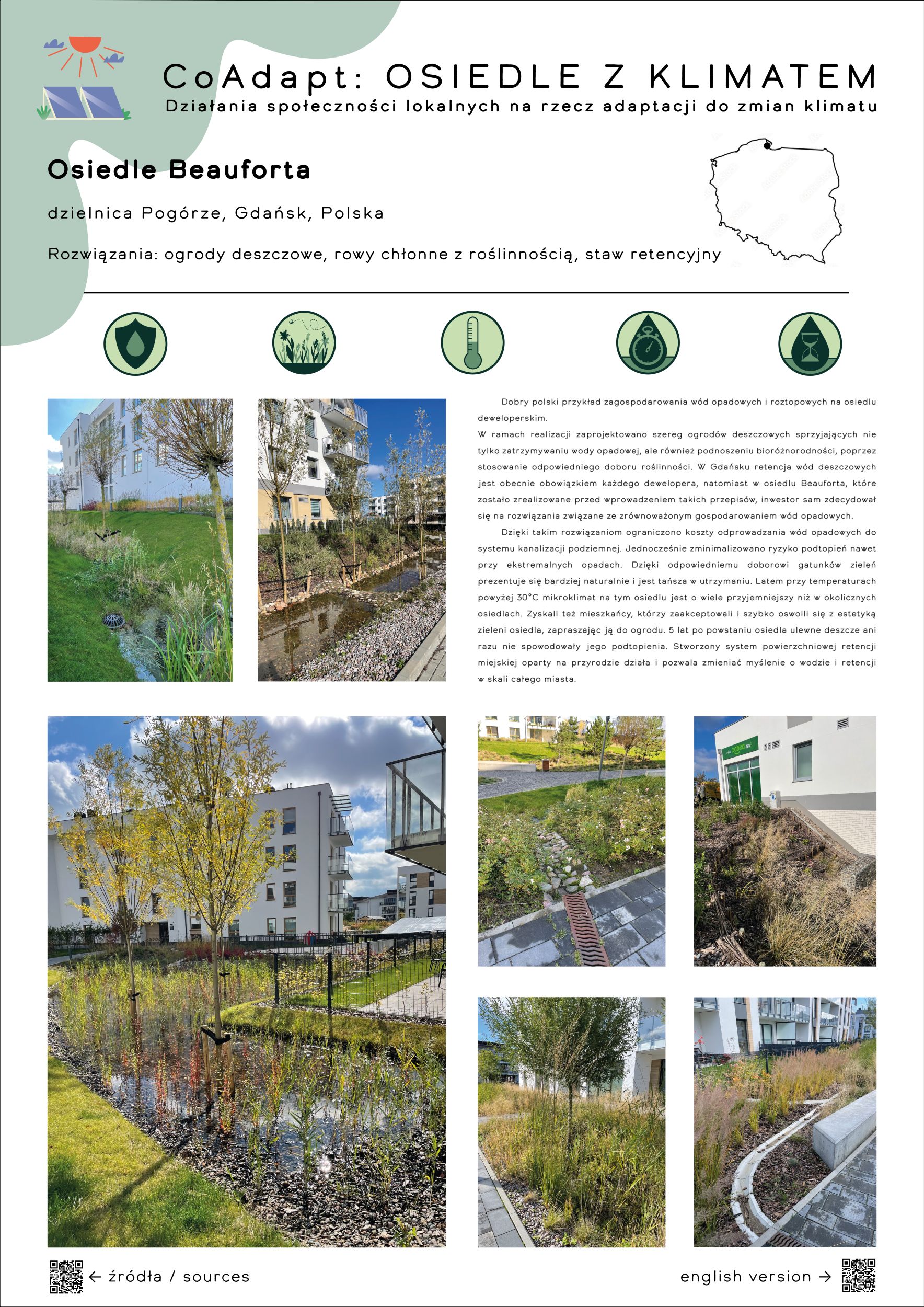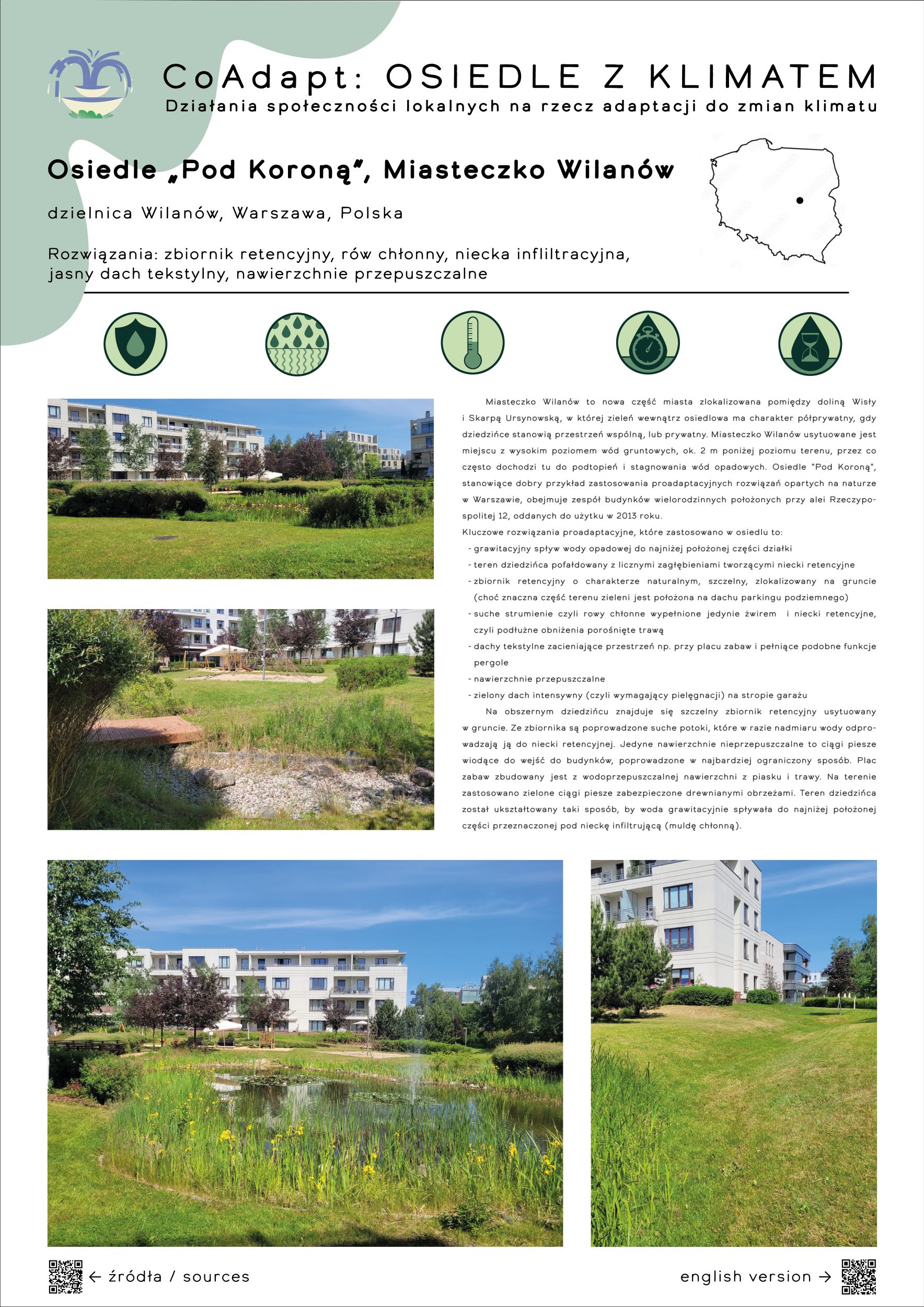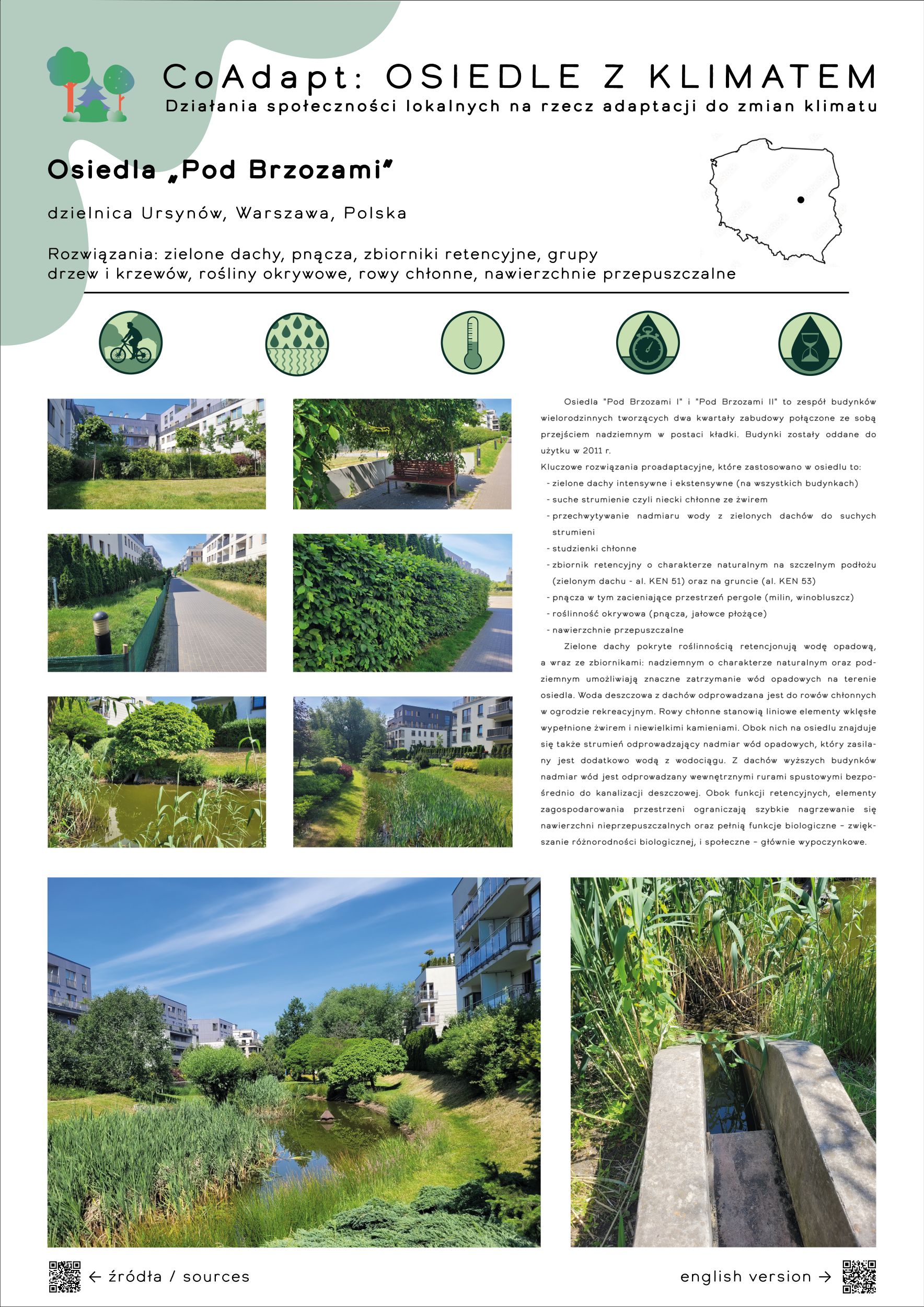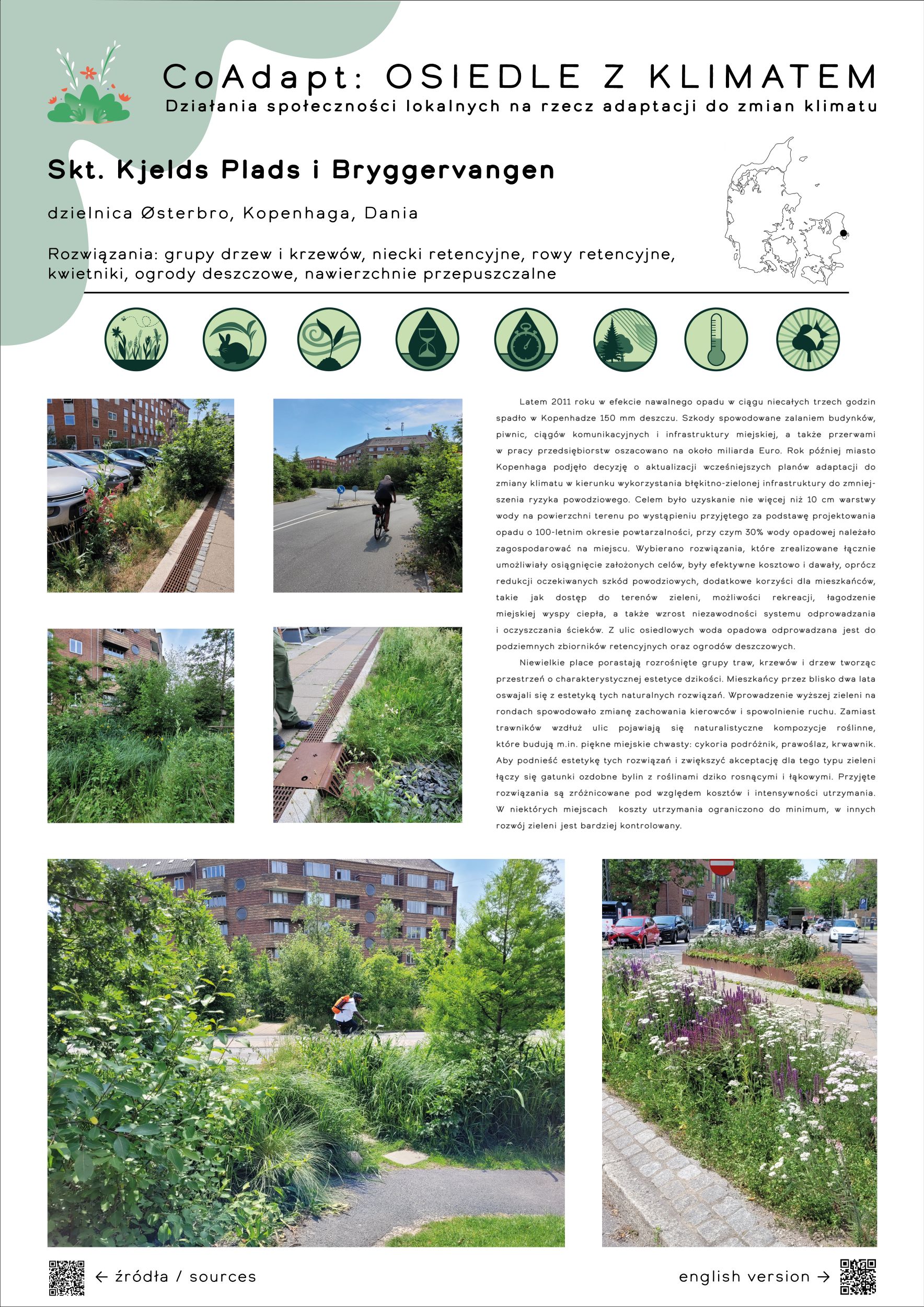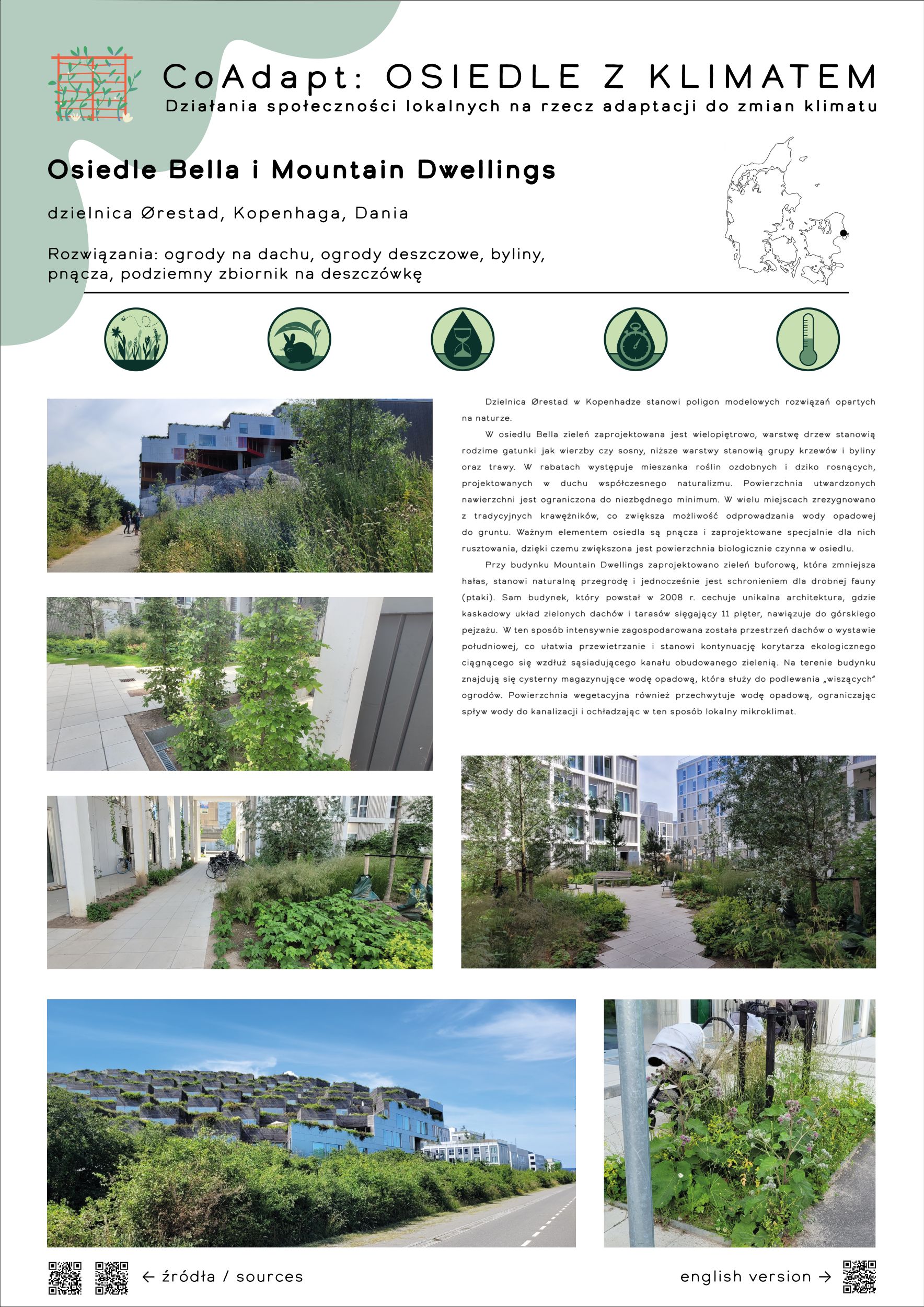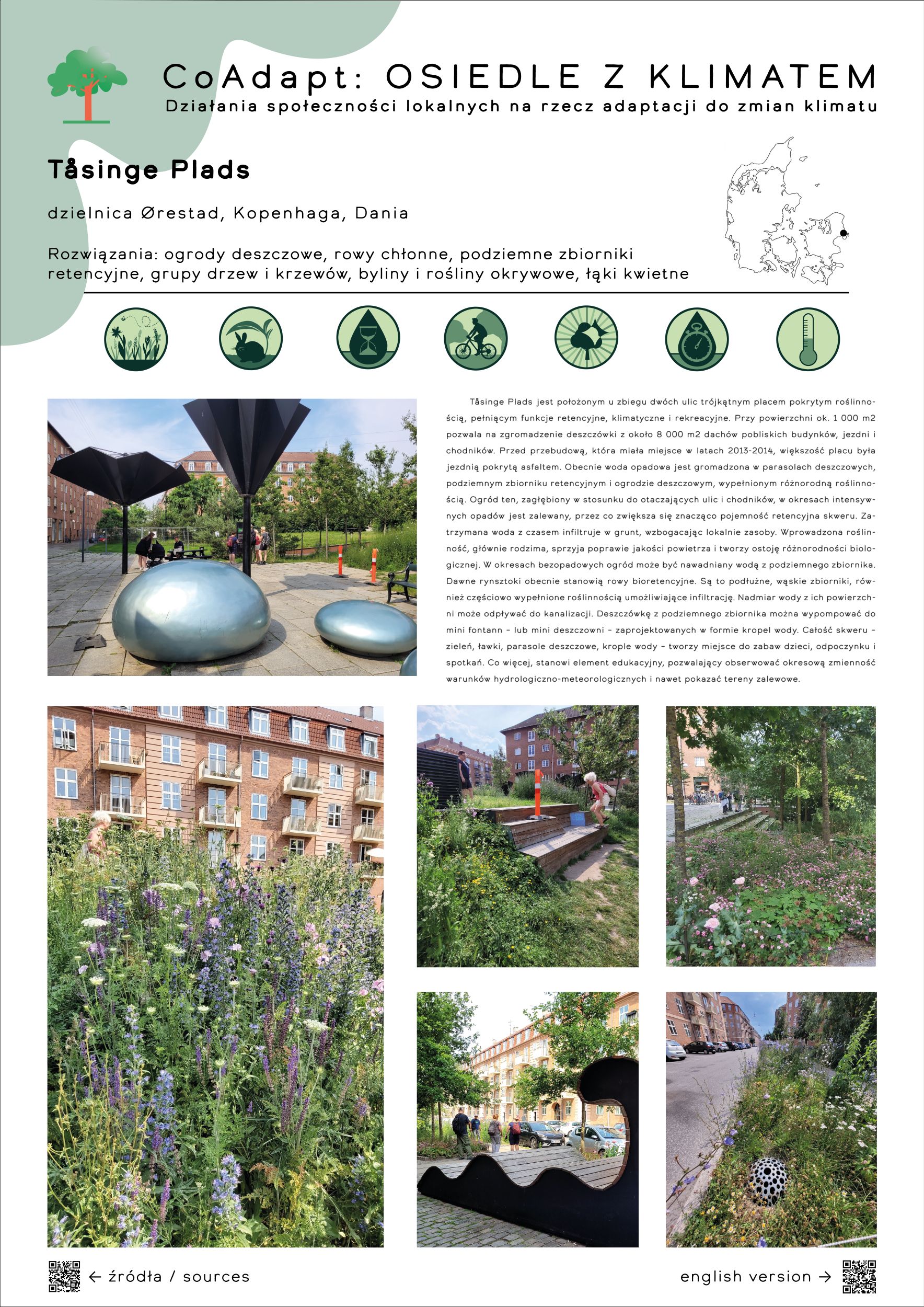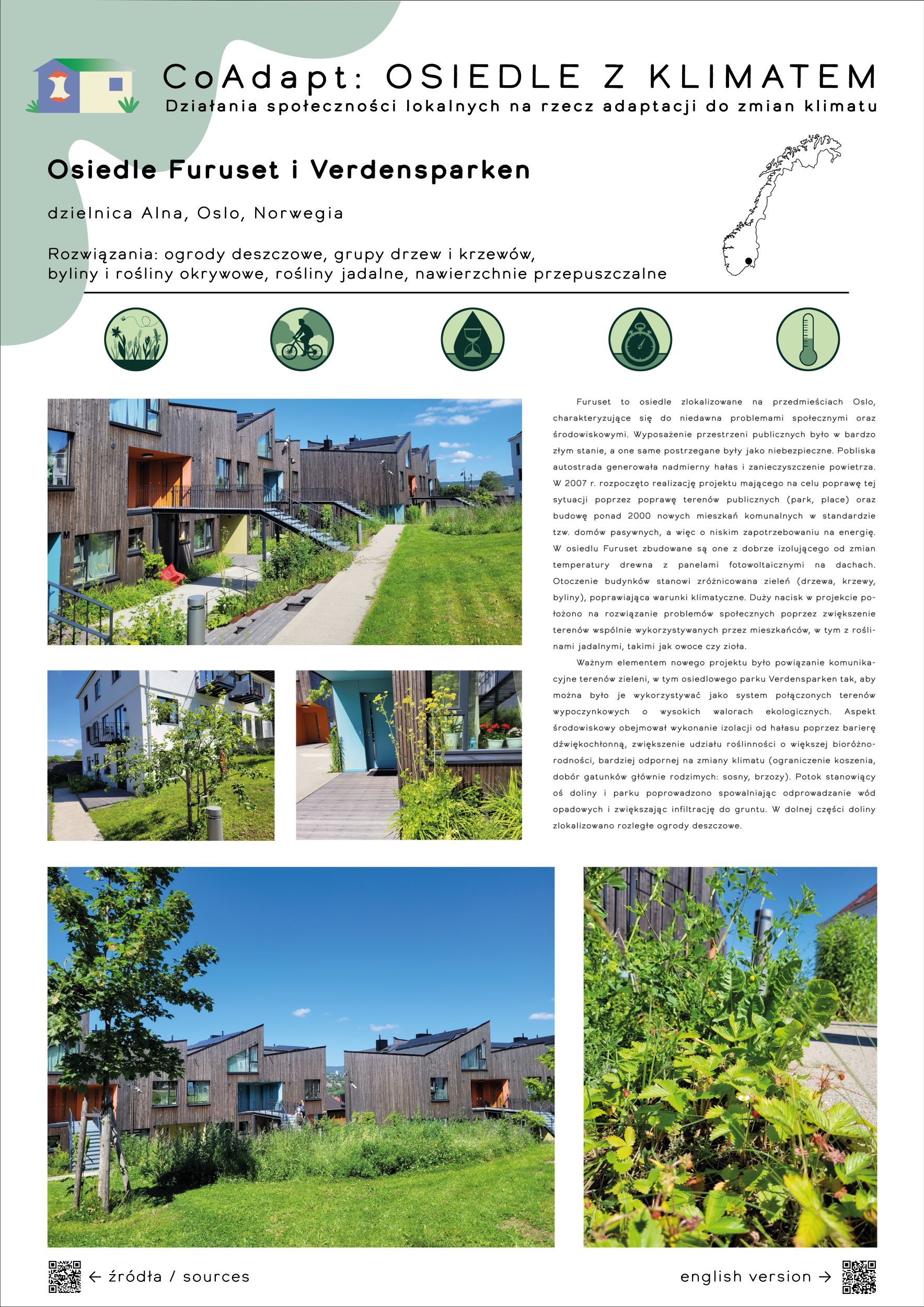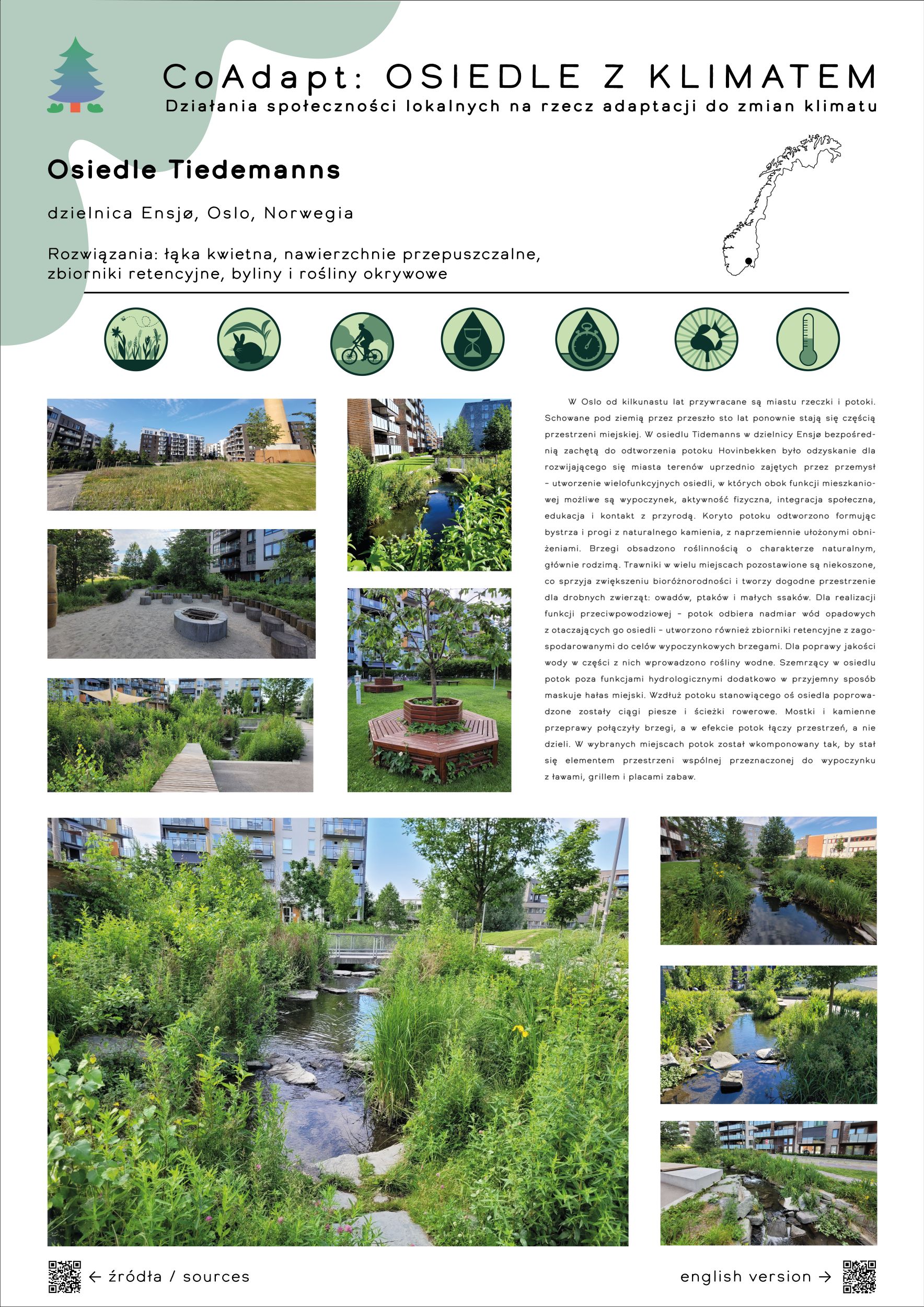We invite you to get to know the estates selected as model estates, already well adapted to climate change – mostly European but also Polish examples. Let them serve as good practices. We will not prevent many unfavorable phenomena in the 21st century related to climate change, but we can better prepare for them and redesign our housing estates.
We present solutions from various cities that bring many benefits, have proven success and can be an inspiration for others. One of the many solutions shown on the posters are actions to improve on-site management of rainwater. At the same time, the environmental conditions of trees that suffer from water shortage in cities are improved, and at the same time the costs of their maintenance, including watering, are reduced. Rain gardens prevent flooding of streets and housing estates and increase the number of habitats for butterflies and birds. Many examples also show that the aesthetics of designed greenery is changing – greenery is multifunctional, it is not only intended to please the eye, but also to work, provide benefits, be cheaper to maintain, support biodiversity and be resistant to changing conditions. Today, we approach the principles of maintaining greenery differently, with the appearance of wild plant species that have previously been treated somewhat disrespectfully. Other Nature-Based Solutions have a similar synergy effect. Filip Springer wrote that the ecological and climate crisis is a crisis of imagination. In this context, it is necessary to learn examples of good practices – settlements already well adapted to climate change, where pioneering solutions have been introduced.

